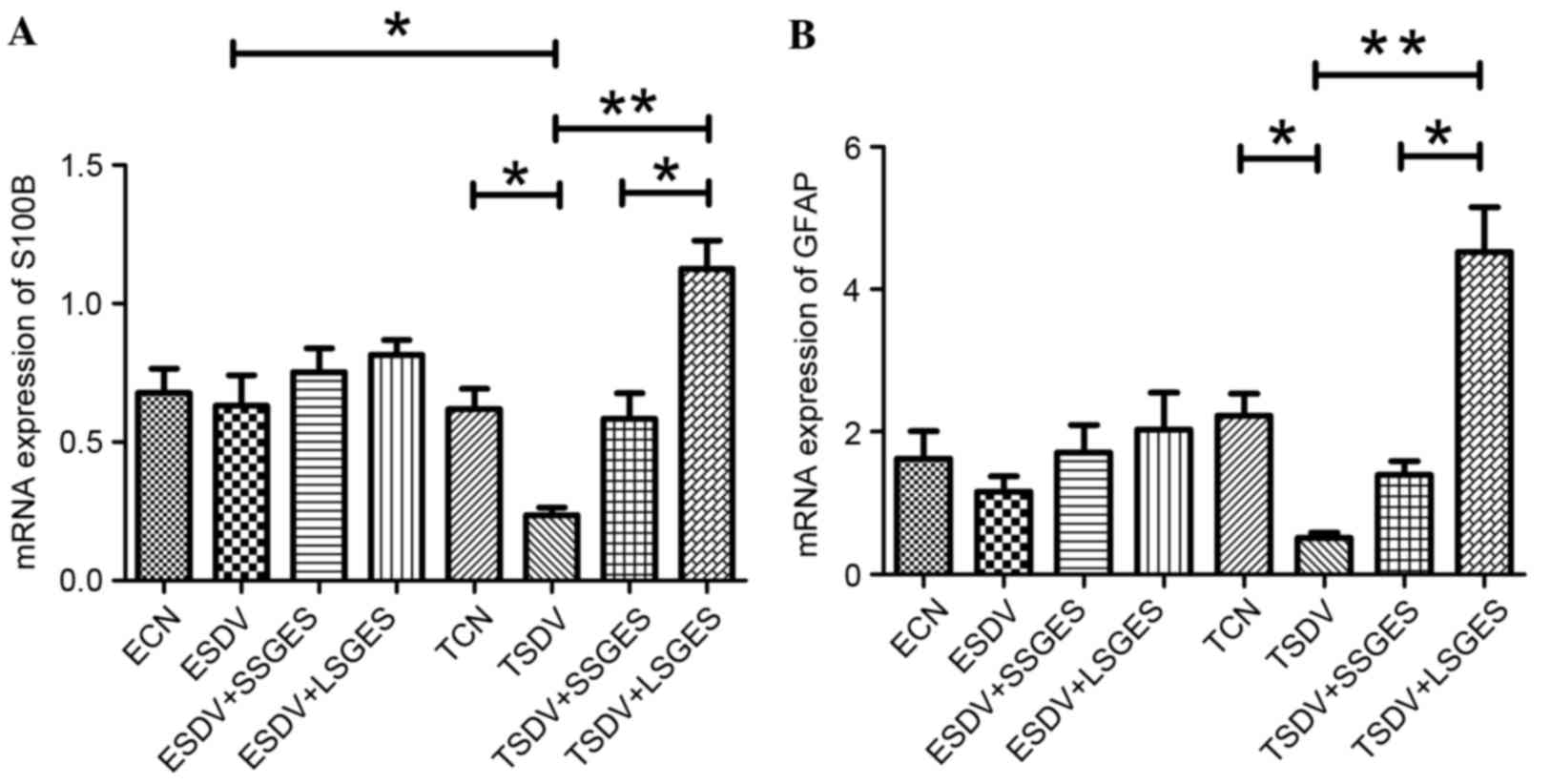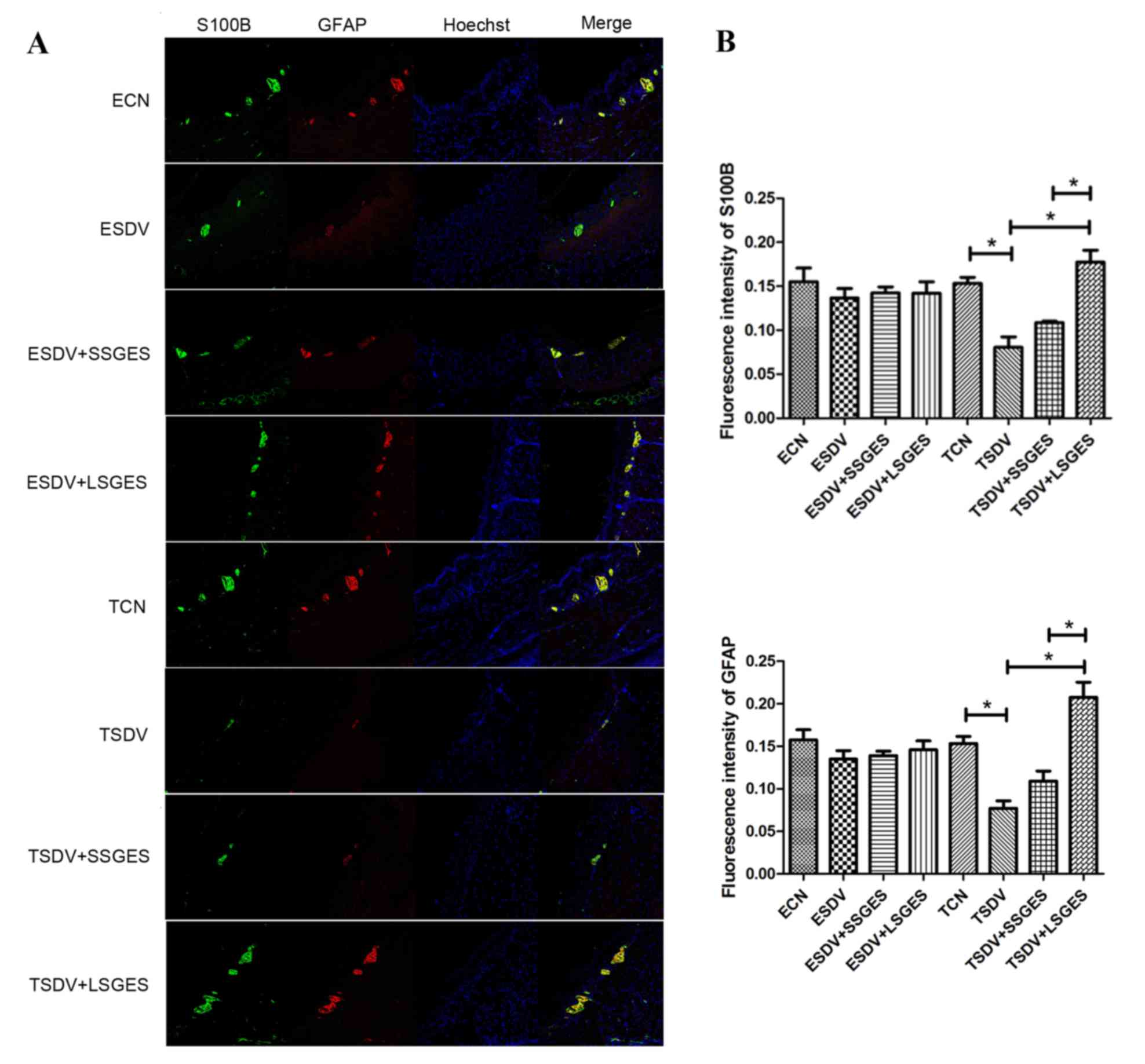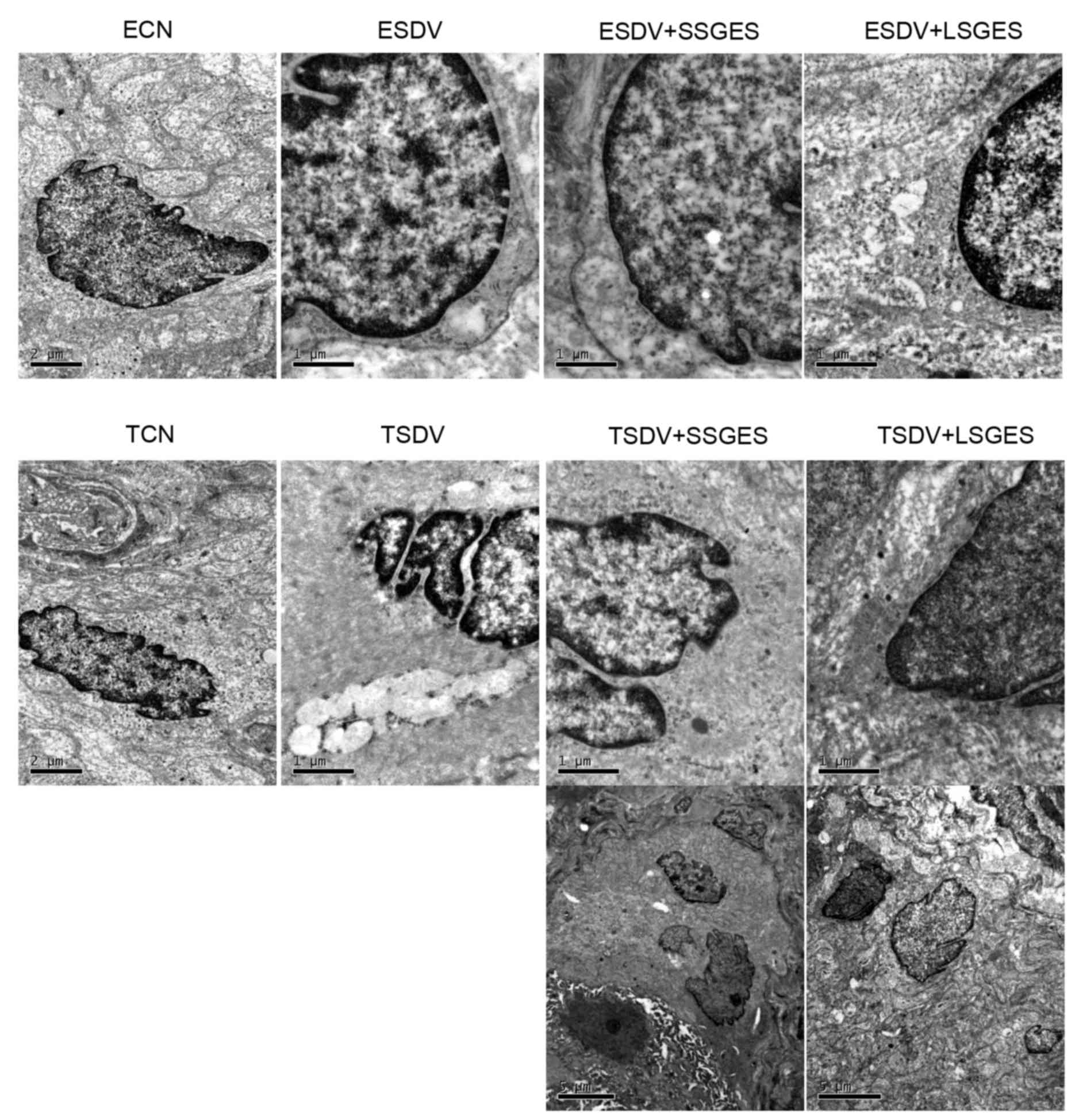|
1
|
Coronado VG, Xu L, Basavaraju SV, McGuire
LC, Wald MM, Faul MD, Guzman BR and Hemphill JD; Centers for
Disease Control and Prevention (CDC), : Surveillance for Traumatic
Brain Injury-Deaths-United States, 1997–2007. MMWR Surveill Summ.
60:1–32. 2011.PubMed/NCBI
|
|
2
|
Kao CH, ChangLai SP, Chieng PU and Yen TC:
Gastric emptying in head-injured patients. Am J Gastroenterol.
93:1108–1112. 1998. View Article : Google Scholar : PubMed/NCBI
|
|
3
|
Pinto TF, Rocha R, Paula CA and de Jesus
RP: Tolerance to enteral nutrition therapy in traumatic brain
injury patients. Brain Inj. 26:1113–1117. 2012. View Article : Google Scholar : PubMed/NCBI
|
|
4
|
Fynne L, Worsoe J, Gregersen T, Schlageter
V, Laurberg S and Krogh K: Gastric and small intestinal dysfunction
in spinal cord injury patients. Acta Neurol Scand. 125:123–138.
2012. View Article : Google Scholar : PubMed/NCBI
|
|
5
|
Song J, Yin J, Sallam HS, Bai T, Chen Y
and Chen JD: Electroacupuncture improves burn-induced impairment in
gastric motility mediated via the vagal mechanism in rats.
Neurogastroenterol Motil. 25:807–e635. 2013.PubMed/NCBI
|
|
6
|
Zhou SY, Lu YX and Owyang C: Gastric
relaxation induced by hyperglycemia is mediated by vagal afferent
pathways in the rat. Am J Physiol Gastrointest Liver Physiol.
294:G1158–G1164. 2008. View Article : Google Scholar : PubMed/NCBI
|
|
7
|
Chen J, Koothan T and Chen JD:
Synchronized gastric electrical stimulation improves
vagotomy-induced impairment in gastric accommodation via the
nitrergic pathway in dogs. Am J Physiol Gastrointest Liver Physiol.
296:G310–G318. 2009. View Article : Google Scholar : PubMed/NCBI
|
|
8
|
Furness JB: The Enteric Nervous System.
Blackwell Publishing; Oxford: pp. 2742006
|
|
9
|
Gulbransen BD: Enteric glia. Morgan &
Claypool Publishers; San Rafael, CA: 2014, PubMed/NCBI
|
|
10
|
De Giorgio R, Giancola F, Boschetti E,
Abdo H, Lardeux B and Neunlist M: Enteric glia and neuroprotection:
Basic and clinical aspects. Am J Physiol Gastrointest Liver
Physiol. 303:G887–G893. 2012. View Article : Google Scholar : PubMed/NCBI
|
|
11
|
Bassotti G, Villanacci V, Nascimbeni R,
Cadei M, Manenti S, Antonelli E, Fanini L and Salerni B: Increase
of colonic mast cells in obstructed defecation and their
relationship with enteric glia. Dig Dis Sci. 57:65–71. 2012.
View Article : Google Scholar : PubMed/NCBI
|
|
12
|
McClain JL, Grubišić V, Fried D,
Gomez-Suarez RA, Leinninger GM, Sévigny J, Parpura V and Gulbransen
BD: Ca2+ responses in enteric glia are mediated by connexin-43
hemichannels and modulate colonic transit in mice. Gastroenterol.
146:497–507.e1. 2014. View Article : Google Scholar
|
|
13
|
Collares EF and Vinagre AM: Evidence of
the effect of dipyrone on the central nervous system as a
determinant of delayed gastric emptying observed in rats after its
administration. Braz J Med Biol Res. 36:1375–1382. 2003. View Article : Google Scholar : PubMed/NCBI
|
|
14
|
Yang W, Wang N, Shi X and Chen J:
Synchronized dual pulse gastric electrical stimulation induces
activation of enteric glial cells in rats with diabetic
gastroparesis. Gastroenterol Res Pract. 2014:9640712014. View Article : Google Scholar : PubMed/NCBI
|
|
15
|
Di Marzo V, Capasso R, Matias I, Aviello
G, Petrosino S, Borrelli F, Romano B, Orlando P, Capasso F and Izzo
AA: The role of endocannabinoids in the regulation of gastric
emptying: Alterations in mice fed a high-fat diet. Br J Pharmacol.
153:1272–1280. 2008. View Article : Google Scholar : PubMed/NCBI
|
|
16
|
Livak KJ and Schmittgen TD: Analysis of
relative gene expression data using real-time quantitative PCR and
the 2(−Delta Delta C(T)) method. Methods. 25:402–408. 2001.
View Article : Google Scholar : PubMed/NCBI
|
|
17
|
Tanaka T, Kendrick ML, Zyromski NJ, Meile
T and Sarr MG: Vagal innervation modulates motor pattern but not
initiation of canine gastric migrating motor complex. Am J Physiol
Gastrointest Liver Physiol. 281:G283–G292. 2001.PubMed/NCBI
|
|
18
|
Costantini TW, Bansal V, Krzyzaniak M,
Putnam JG, Peterson CY, Loomis WH, Wolf P, Baird A, Eliceiri BP and
Coimbra R: Vagal nerve stimulation protects against burn-induced
intestinal injury through activation of enteric glia cells. Am J
Physiol Gastrointest Liver Physiol. 299:G1308–G1318. 2010.
View Article : Google Scholar : PubMed/NCBI
|
|
19
|
Gulbransen BD, Bains JS and Sharkey KA:
Enteric glia are targets of the sympathetic innervation of the
myentericplexus in the guinea pig distal colon. J Neurosci.
30:6801–6809. 2010. View Article : Google Scholar : PubMed/NCBI
|
|
20
|
von Boyen GB, Steinkamp M, Reinshagen M,
Schäfer KH, Adler G and Kirsch J: Proinflammatory cytokines
increase glial fibrillary acidic protein expression in enteric
glia. Gut. 53:222–228. 2004. View Article : Google Scholar : PubMed/NCBI
|
|
21
|
Du F, Wang L, Qian W and Liu S: Loss of
enteric neurons accompanied by decreased expression of GDNF and
PI3K/Akt pathway in diabetic rats. Neurogastroenterol Motil.
21:1229–e114. 2009. View Article : Google Scholar : PubMed/NCBI
|
|
22
|
Savidge TC, Newman P, Pothoulakis C, Ruhl
A, Neunlist M, Bourreille A, Hurst R and Sofroniew MV: Enteric glia
regulate intestinal barrier function and inflammation via release
of S-nitrosoglutathione. Gastroenterol. 132:1344–1358. 2007.
View Article : Google Scholar
|
|
23
|
Nasser Y, Keenan CM, Ma AC, McCafferty DM
and Sharkey KA: Expression of a functional metabotropic glutamate
receptor 5 on enteric glia is altered in states of inflammation.
Glia. 55:859–872. 2007. View Article : Google Scholar : PubMed/NCBI
|
|
24
|
Xiao W, Wang W, Chen W, Sun L, Li X, Zhang
C and Yang H: GDNF is involved in the barrier-inducing effect of
enteric glial cells on intestinal epithelial cells under acute
ischemia reperfusion stimulation. Mol Neurobiol. 50:274–289. 2014.
View Article : Google Scholar : PubMed/NCBI
|
|
25
|
Cheadle GA, Costantini TW, Bansal V,
Eliceiri BP and Coimbra R: Cholinergic signaling in the gut: A
novel mechanism of barrier protection through activation of enteric
glia cells. Surg Infect (Larchmt). 15:387–393. 2014. View Article : Google Scholar : PubMed/NCBI
|
|
26
|
Selgrad M, De Giorgio R, Fini L,
Cogliandro RF, Williams S, Stanghellini V, Barbara G, Tonini M,
Corinaldesi R, Genta RM, et al: JC virus infects the enteric glia
of patients with chronic idiopathic intestinal pseudo-obstruction.
Gut. 58:25–32. 2009. View Article : Google Scholar : PubMed/NCBI
|
|
27
|
Stenkamp-Strahm C, Patterson S, Boren J,
Gericke M and Balemba O: High-fat diet and age-dependent effects on
enteric glial cell populations of mouse small intestine. Auton
Neurosci. 177:199–210. 2013. View Article : Google Scholar : PubMed/NCBI
|
|
28
|
Bassotti G, Villanacci V, Maurer CA,
Fisogni S, Di Fabio F, Cadei M, Morelli A, Panagiotis T, Cathomas G
and Salerni B: The role of glial cells and apoptosis of enteric
neurones in the neuropathology of intractable slow transit
constipation. Gut. 55:41–46. 2006. View Article : Google Scholar : PubMed/NCBI
|
|
29
|
Gulbransen BD, Bains JS and Sharkey KA:
Enteric glia are targets of the sympathetic innervation of the
myenteric plexus in the guinea pig distal colon. J Neurosci.
30:6801–6809. 2010. View Article : Google Scholar : PubMed/NCBI
|
|
30
|
Gomes P, Chevalier J, Boesmans W, Roosen
L, van den Abbeel V, Neunlist M, Tack J and Berghe P Vanden:
ATP-dependent paracrine communication between enteric neurons and
glia in a primary cell culture derived from embryonic mice.
Neurogastroenterol Motil. 21:870–e62. 2009. View Article : Google Scholar : PubMed/NCBI
|
|
31
|
Gulbransen BD and Sharkey KA: Purinergic
neuron-to-glia signaling in the enteric nervous system.
Gastroenterol. 136:1349–1358. 2009. View Article : Google Scholar
|
|
32
|
Boesmans W, Cirillo C, Van den Abbeel V,
Van den Haute C, Depoortere I, Tack J and Berghe P Vanden:
Neurotransmitters involved in fast excitatory neurotransmission
directly activate enteric glial cells. Neurogastroenterol Motil.
25:e151–e160. 2013. View Article : Google Scholar : PubMed/NCBI
|
|
33
|
Cirillo C, Sarnelli G, Esposito G, Turco
F, Steardo L and Cuomo R: S100B protein in the gut: The evidence
for enteroglial-sustained intestinal inflammation. World J
Gastroenterol. 17:1261–1266. 2011. View Article : Google Scholar : PubMed/NCBI
|
|
34
|
Turco F, Sarnelli G, Cirillo C, Palumbo I,
De Giorgi F, D'Alessandro A, Cammarota M, Giuliano M and Cuomo R:
Enteroglial-derived S100B protein integrates bacteria-induced
Toll-like receptor signalling in human enteric glial cells. Gut.
63:105–115. 2014. View Article : Google Scholar : PubMed/NCBI
|
|
35
|
Cirillo C, Sarnelli G, Turco F, Mango A,
Grosso M, Aprea G, Masone S and Cuomo R: Proinflammatory stimuli
activates human-derived enteroglial cells and induces autocrine
nitric oxide production. Neurogastroenterol Motil. 23:e372–e382.
2011. View Article : Google Scholar : PubMed/NCBI
|
|
36
|
Esposito G, Cirillo C, Sarnelli G, De
Filippis D, D'Armiento FP, Rocco A, Nardone G, Petruzzelli R,
Grosso M, Izzo P, et al: Enteric glial-derived S100B protein
stimulates nitric oxide production in celiac disease.
Gastroenterol. 133:918–925. 2007. View Article : Google Scholar
|
|
37
|
Thacker M, Rivera LR, Cho HJ and Furness
JB: The relationship between glial distortion and neuronal changes
following intestinal ischemia and reperfusion. Neurogastroenterol
Motil. 23:e500–e509. 2011. View Article : Google Scholar : PubMed/NCBI
|
|
38
|
Clairembault T, Kamphuis W,
Leclair-Visonneau L, Rolli-Derkinderen M, Coron E, Neunlist M, Hol
EM and Derkinderen P: Enteric GFAP expression and phosphorylation
in Parkinson's disease. J Neurochem. 130:805–815. 2014. View Article : Google Scholar : PubMed/NCBI
|














